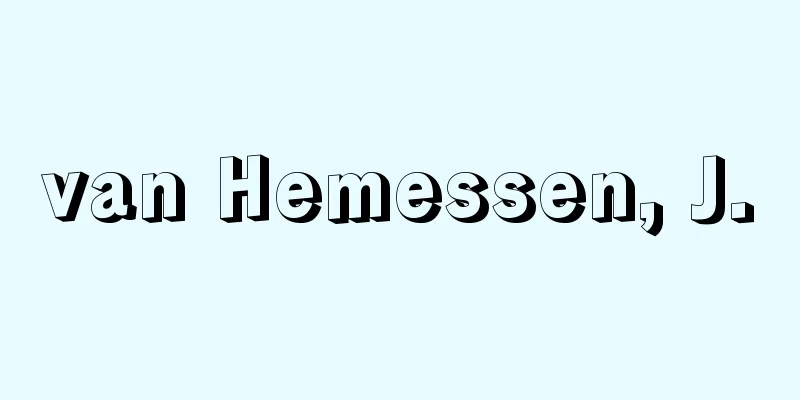Functionalist architecture

|
Functionalism, which became influential in the fields of natural science and social science from the second half of the 19th century, acted as a guiding principle especially in the formation and development of modern architecture and design. The starting point for this was the motto of 19th century American sculptor Horatio Greenough (1805-52), "form follows function." In other words, this is a philosophy that values designs that are focused on purpose and are functionally lean, and rejects all mere playfulness. In the 20th century, against the backdrop of the development of industrial power and rational thinking, this trend was further strengthened and became dominant in the modern architectural movement of the 1920s and 1930s. While seeking a model in the beauty of machines, Le Corbusier based his work on mathematical precision and physical economy, embarking on a fundamental expression composed of these various factors, and bringing to light functionalism as a new methodology in architecture. Ludwig Mies van der Rohe is an architect who took the rational aspect even further. Gropius's German Bauhaus also aimed for an aesthetic that was ultimately appropriate for the new industrial age, and this was deeply connected to functionalism. The same thought was also behind CIAM's (International Congress of Modern Architecture) decision to take up the topic of "functional cities." This thought, which initially had youthful energy, soon showed signs of standardization and stereotyping, and to that extent it was forced to change course. [Kenshiro Takami] Source: Shogakukan Encyclopedia Nipponica About Encyclopedia Nipponica Information | Legend |
|
19世紀後半から自然科学や社会科学の諸分野で有力になった機能主義は、とりわけ近代建築や近代デザインの形成・発展期に指導理念として作用してきた。ここでは19世紀アメリカの彫刻家グリーノーHoratio Greenough(1805―52)の述べた「形態は機能に従う」というモットーが出発点に置かれる。すなわち、用途に徹し、機能的に無駄のないデザインを最良のものとし、単なる造形的遊戯はいっさい排していこうとする考え方である。 20世紀に入って、工業力の充実と合理的思考の発達を背景にこの方向はいっそう強化され、1920年代、30年代の近代建築運動において支配的となった。ル・コルビュジエは機械美に範例を求めながら、数学的な精密さや物理的な節約を基本に置き、それら諸因子によって構成される原理的な表現に入り、建築における機能主義を新しい方法論として浮かび上がらせた。 ミース・ファン・デル・ローエは、合理的な側面をより一段と推進させた建築家である。グロピウスによるドイツのバウハウスが目ざしたところも、終局的には新しい工業時代にふさわしい美学であり、これが機能主義と深くかかわった。CIAM(シアム)(近代建築国際会議)が「機能的な都市」を議題に取り上げたのも同じ思潮のうえにたっていた。当初若々しいエネルギーをもったこの思潮もやがて画一化、定型化の兆しがみえ、その限りにおいて路線変更を余儀なくされることとなった。 [高見堅志郎] 出典 小学館 日本大百科全書(ニッポニカ)日本大百科全書(ニッポニカ)について 情報 | 凡例 |
<<: Functional polymers - Yesterday's functional polymers
Recommend
Liparis formosana (English spelling)
… [Ken Inoue]. … *Some of the terminology that me...
Seahorse - Seahorse
→Seahorse Source : Heibonsha Encyclopedia About My...
Wako
1. A male child of a person of high social standin...
Austral [Islands] - Austral
…the Austral Islands are a group of islands in Fr...
Moratuwa (English spelling)
A commercial and industrial city in southwestern S...
Montfort
...The Bregenz Counts died out in 1154, and the r...
Incestuous marriage - Kinshinkekkon
Marriage between people with close kinship. This i...
Scorpion (Crab Bug) - Scorpion (English spelling) book-scorpion
A general term for arthropods belonging to the ord...
Lounsbury, FG (English spelling) LounsburyFG
...Comparing the naming systems classified as Oma...
Rallus aquaticus (English spelling) Rallusaquaticus
…A species of bird in the family Rallidae, or a g...
Maitreya Sutra - Mirokukyo
A general term for the sutras that describe the fu...
Iris japonica - Iris
...In the ninth chapter of the Tales of Ise, the ...
Nobunao Nanbu
Year of death: October 5, 1599 (November 22, 1599)...
Asellus kawamurai (English spelling) Aselluskawamurai
…[Shigeo Gamou]. … *Some of the terminology that ...
host
…One of the mutually harmful effects of the relat...

![Mikumo [town] - Mikumo](/upload/images/67ccefbd55a30.webp)







